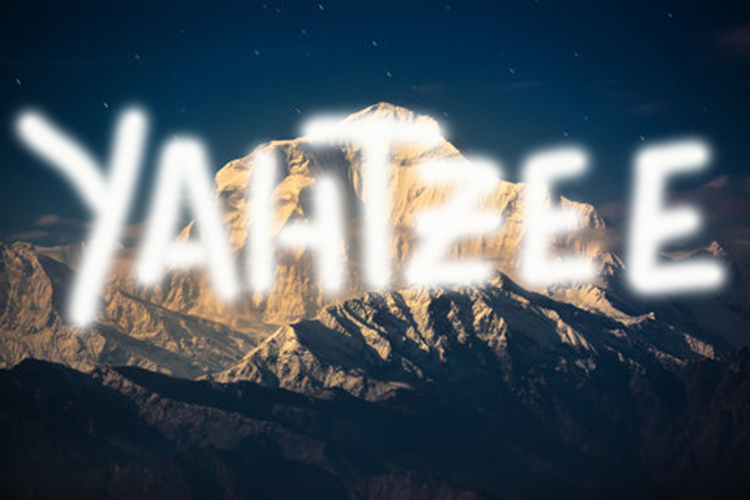mAtT Nichols: Confident Anticipation, & Jaclyn Jacunski: Inaugural front yard project
@ The Franklin
3522 W. Franklin Blvd, Chicago IL 60624
Opening Saturday, October 5th, from 6PM - 9PM
On view through Sunday, October 27th
Nichols-Confident Anticipation
I’ve always had a strong interest in icons, symbols, and language, which frequently manifests itself in the creation of objects. However, over the past year I have been consumed by a direct interest in the power of images and narrative. Moreover, I have been extensively researching the work of three artists: Christopher Wool, John Baldessari, and Ed Ruscha. Interestingly enough, Wool has ties to Chicago, while Baldessari and Ruscha have California roots, which is especially meaningful to me because of my personal history and experience. Although their practices may seem very similar initially, I have very particular, varying, reasons for examining each individually. Specifically, I am intrigued by Wool’s early work for it’s ability to start a narrative in one place and end somewhere that is entirely unpredictable, all the while implementing very simple language. Conversely, Baldessari’s ability to juxtapose images and text in reduced compositions that seem to be infinitely full of potential and narrative grows more complex with time. Lastly, Ruscha displays yet a different approach all together in that his work relies on word play and linguistic ambiguity to create a psychological hook within the viewer.
! In the past I would have argued that the value in images lies within the artist’s ability to create original pictures and that the power in language is in its ability to create a definitive narrative. However, I think that this is an antiquated approach to making in general and that the contemporary values of aesthetic proclivity are changing to favor ubiquity in form and ambiguity in rhetoric. In support of this ideology, in the essay titled Structural Anthropology, Claude Levi- Strauss makes the argument that linguistically, “there are no necessary relationships at the vocabulary levelâ€. Rather, the relationship of terms and their meanings are potentially and proverbially wide open. With this in mind I began reassessing my understanding of how the relationship between image and text effects narrative–considering the internet as the world’s largest resource for readily available, ubiquitous imagery. Subsequently, I sought to create a set of works in which image and text are inextricably linked, but add to one another’s significance. In this manner, to borrow from Levi-Strauss once again, the work is meant to “conceive of the relationship between myth and ritual as dialectical†with the image directly correlating to myth and the written word to ritual. The result is a set of pictures coupled with concise language– collaged digitally and showing a clear presence of the hand.
Formally, I consider the language and it’s application to be of the utmost importance–alluding to classic mark making and composition. In this sense, the slightest change in typography or location of a single letter changes the pace, speed, and potential outcome of each juxtaposition. Therefore, the language not only creates a narrative, but dictates the method by which each picture is framed and must be considered. Additionally, my hope is that it is impossible to differentiate whether the language informs the image or vice versa, and further impossible for the viewer to stop trying. Moreover, of equal importance to the work’s content is the manner in which this body is produced. Thus, rather than having the work printed on paper, the images are fabricated as engineer grade freeway signs to OSHA specifications by a government contracted manufacturer. This process involves digitally printing the image, adhering it to a shaped piece of aluminum, and coating the image in high impact prismatic vinyl that emits a full color spectrum reflection when hit by light. My choice in selecting this mode of production is three fold, bridging the gap from digital input to analog output, implementing utilitarian materials that physically demand the attention of the viewer, and making the work a temporally sensitive experience that cannot be fully re-presented by way of technology.
mAtT Nichols holds a BA in art practice from U.C. Berkeley and was a merit scholar at The School of The Art Institute of Chicago, receiving his MFA in 2010. He lives and works in Los Angeles.
Special thanks to CorbettVsDempsey, Dock 6, Chris Bradley, Christopher Furman, Bohdan Gorczynski, Joe Hardesty, Scott Hunter, and Dan Sullivan for making this project possible.
Inaugural front yard project by
Jaclyn Jacunski
At The Franklin’s front yard’s chain link fence, artist Jaclyn Jacunski will install cotton fabric naturally dyed with materials acquired from empty lots of East Garfield Park.
The urban landscape physically expresses and reflects the social, political, and financial networks that bind the community while also creating divides between us.
The work reflects on Lee Bogg’s theory of productive engagement on such spaces- to consider what is there, and what has been left behind in the community. The materials from the lot are used to create a new object that works to engage the public and is meant to be critical of the operations of power and property.
Jaclyn Jacunski lives and works in Chicago working in many formats with an emphasis in printmaking. She received her M.F.A. from the School of the Art Institute of Chicago (SAIC) and a B.F. A. from the University of Wisconsin, Madison, trained at Tandem Press. She has taught at SAIC and Harrington College of Design. She has recently exhibited at the Center for Book and Paper Arts, Hyde Park Art Center and Spudnik Press Annex. Her artwork explores protests and acts of resistance in local communities, examining how these things manifest in signs, in the landscape, and media.
T H E F R A N K L I N
3522 W. FRANKLIN BLVD, CHICAGO (WEST SIDE / EAST GARFIELD PARK)
PH. (312) 823-3632
HOURS: F 4-6PM, SAT 12-4PM OR BY APPOINTMENT
http://thefranklinoutdoor.tumblr.com/
Official Website
More events on this date
Tags: East Garfield Park, Edra Soto, Jaclyn Jacunski, Matt Nichols, navillus woodworks

« previous event
next event »